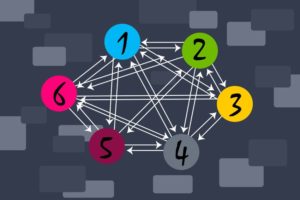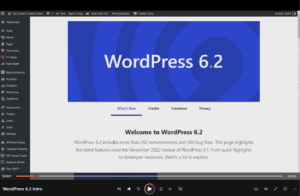You need to really understand who your customer is.
SEO, when done correctly, can contribute to your overall business success. And the best thing is, it’s relatively easy to learn and implement as the series of blog posts outline. To do this, you need to understand who your customer is.
It may seem like all you need to do is just find some good, relevant keywords and work them into your content and meta data. Soon you’ll start to see a boost in your website’s traffic.
However, before you start researching keywords, you first need to have a firm understanding of the people you are talking to. For that I highly recommend you spend time to create an ideal customer profile.
Why is this so important? Before you can create effective keywords, you need to understand who your customer is.
What are their pain points? Issues? Passions? Beliefs? This will provide you not only with insight into the terms that they will be searching for on Google, but also how your business can truly help them. When they believe you have heard them, they are all the more willing to trust what you are offering.
What Is an Ideal Customer Profile?
Nobody can serve everybody. It just spreads you to thin and you won’t be relevant. So you need to narrow it down.
An ideal customer profile is a profile of one individual who is the best fit for your products and services.
This is not every person who can benefit from your content and products, in other words, this is who you target your marketing to. You are offering a solution to their immediate problem.
Businesses typically create ideal customer profiles so they can streamline their marketing and put their resources to best use. It’s used in all areas of marketing, including SEO.
The Elements of an Ideal Customer Profile
An ideal customer profile has two types of data: demographic and psychographic. Of these two, the psychographic may be the most important
Demographic data tells you who the person is. It describes their age, financial status, occupation, education level, geographic location, and other similar information.
Psychographic data is a bit more complex. It describes the person’s beliefs, attitudes, values, and behaviors. This is a bit harder to find, but it’s worth the effort. It gives you insight into what drives your customers to purchase (and which words they’ll use to search for these products).
How to Research your Ideal Customer
You most likely can already describe who your products serve. Think about your best customers. Who most benefits from what you offer?
But an effective ideal customer profile needs objective data gained through feedback from the market. You can’t go by assumptions alone. The more data-based it is, the more accurate and effective it will be.
You can learn a great deal about your target market by researching online. Social media offers a wealth of information.
Search social media sites using keywords related to your products and niche and find demographic information in user profiles. Dig into conversations and comments to uncover psychographic information.
Other places to find out about your ideal customer include blog and YouTube comments, question and answer sites, online forums, customer reviews, survey responses, and your competitors’ audiences. You can also conduct your own research directly by reaching out to people in your target audience.
Putting it All Together
As you go about researching, you’ll start to see patterns.
Put these together and create your ideal customer profile. Give the person a name, find a picture to hold in your mind as you write content and marketing materials.
Once you’ve finished, you’re ready to start your SEO research because you really understand who your customer is. And now that you know your audience well, you can easily figure out what they’re searching for online.
Want to learn more about how you can choose the right keywords for your content?
You can have enthusiastic support and motivation as well as find accountability partners as you implement your SEO Strategy with a free challenge to get you started.
The challenge, delivered by email, is done on your own time. There is a Facebook Group for support and accountability.
Join the Free 5 -Day WordPress SEO Challenge.
Get support implementing these steps and a few more! Increase your blog visibility and get to page 1.
Sign up today! Just click the button!
If you’re seeing this post today you’ve missed the LIVE sessions. There will be more.
The videos remain in the Facebook Group.
Receive lesson by email!


